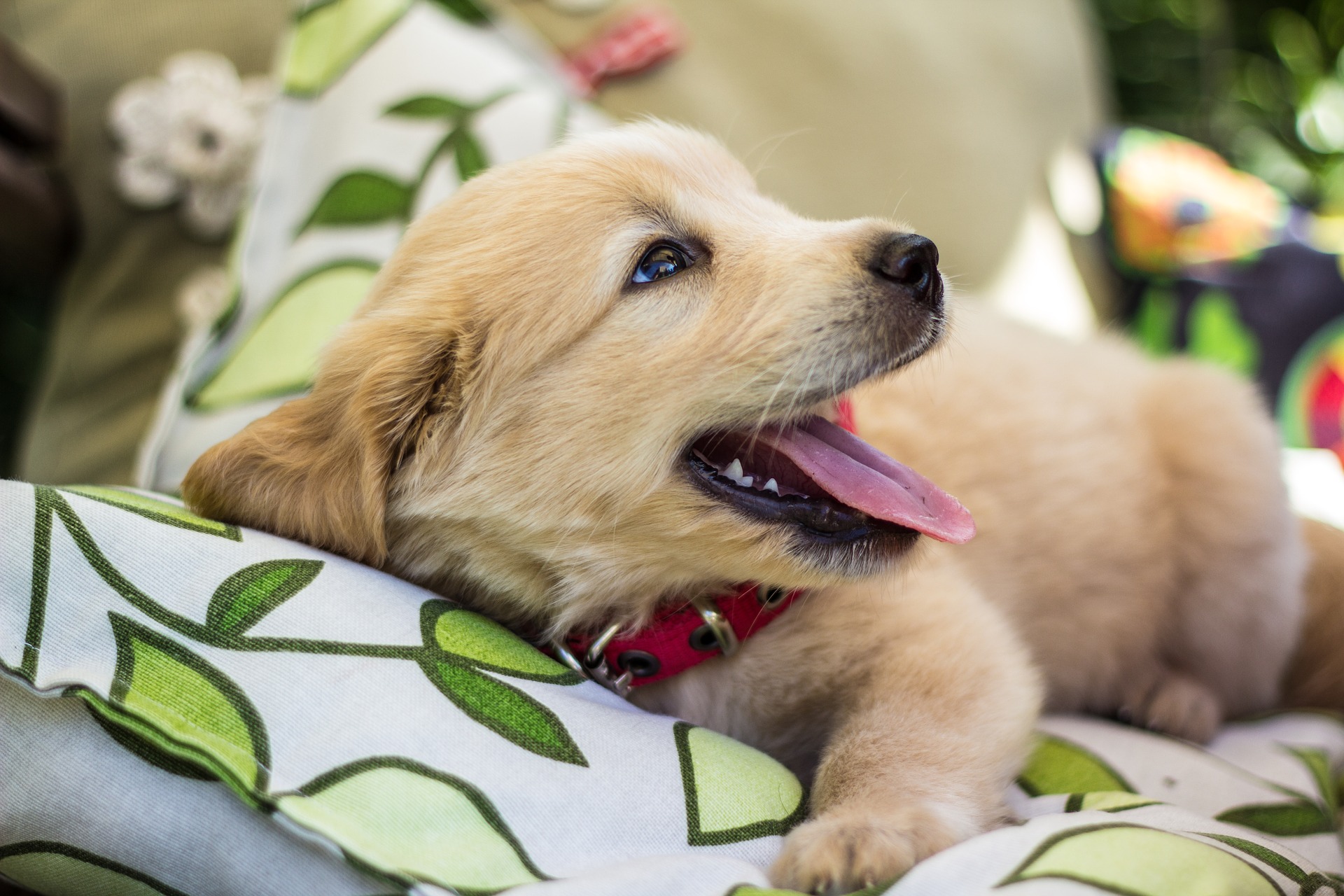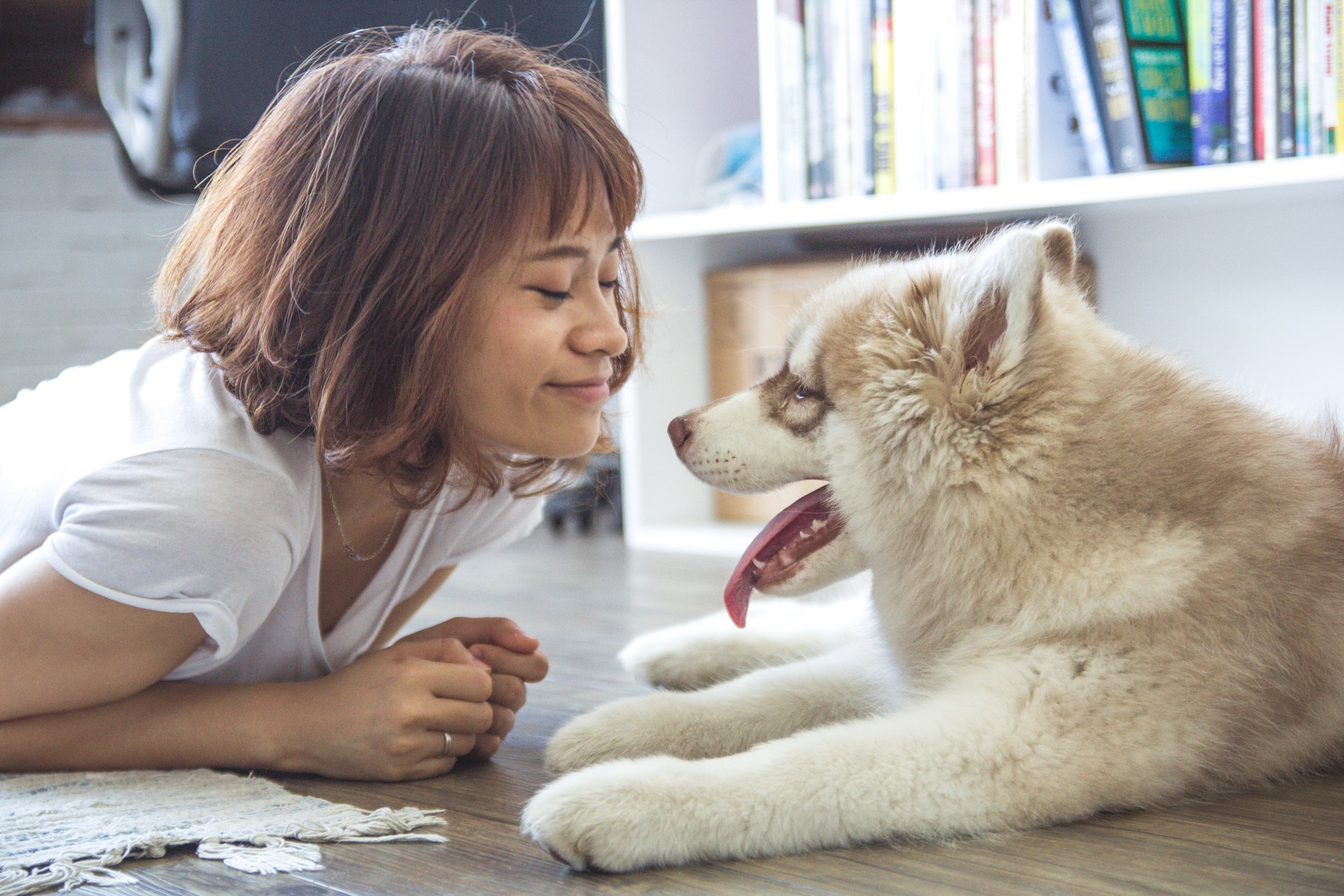
If your considering crate training a puppy while at work then your in the right place.
With a third of American households now proud dog owners, it’s no surprise that there are millions of dogs left home alone during the working day.
Many of these will – of course – be puppies. But how can we effectively care for our furry pups at such a tender age when we are out of the home for several hours at a time?
In an ideal world, we could all take our pups to work (what a morale boost that would be!), but for most of us, this remains a pipe-dream.
Everyone ought to know that caging up puppies for that long is not good for their health, and will likely also have learned from experience the consequences of allowing them to enjoy the house unsupervised.
So what should you do?
Well, fret not as there are a number of solutions – or should we say approaches – to effectively care for your puppy while at work.
In some cases, it can actually provide a useful training aid.
But one word of caution before we begin – what works for one scenario may not always be suitable in another.
So it’s ultimately down to the owner to assess their own situation and establish a course of action that will keep their pups happy and healthy.
The video training below provides effective training methods that can help with crate training your puppy while at work.
Click The Video To Play
(video will open in a new window)
The Difficulties Of Crate Training A Puppy While At Work
Now, despite some people still finding crating their puppies to be cruel, the truth is that the overwhelming majority of veterinarians and canine professionals agree that it is necessary and indeed beneficial towards developing a healthy dog.
The obvious advantages of using a crate are that it helps to limit any damage caused by your pup by providing a barrier that prevents them from running amuck.
Pup’s left alone to freely roam without humans around will take the opportunity to pull at those curtains, scratch on that wooden table, and really get their teeth into those smelly shoes!
But it would be especially selfish just to crate a puppy for that reason alone.
Another advantage of effective crating is that it ensures that the puppy is safe.
Basically, they cannot go about exploring and risk choking or cutting themselves.
The crate ought to be seen as a safe environment, packed full of interesting toys and puzzles to enjoy and of course a plethora of cozy cushions.
So what’s the problem?
Well, the obvious one is time.
Much as crates provide a straightforward and on paper logical solution, the truth is that puppies really shouldn’t be kept in such confinement for 8 hours or longer.
In fact, young pups shouldn’t be left in their cage unsupervised for longer than an hour.
And in most cases, doing so will result in the development of early-onset separation anxiety.
Which many dog owners will be able to express how difficult that can be when dogs reach maturity.
Of course, there’s no set ‘rules’ for how long a puppy can be left in a crate.
Breed and individual temperament play a major role, but the following is broadly considered to be reasonable:
Maximum time in crate…
- 8-10 Weeks (very young) no more than 60 minutes.
- 11-14 Weeks (still young) up to three hours maximum.
- 15-17 Weeks (young) no more than five hours, likely closer to three.
Compared to a full adult dog – which at best will be comfortable caged up for about 8 hours, it is clear that puppies are not really ideal for those also holding down a full-time job.
Naturally, for households where members come and go over the day and can look out the pet with food and exercise, then caging is not an issue.
But for those where everyone is concurrently out for a long time then it is a major problem.
It is simply cruel to leave your puppy alone in a cage for eight hours, and you can rightly expect to come home to a big smelly mess that needs to be cleaned up.
Hardly ideal after a long day.
And no matter how much love and affection you then laud onto your freaked out and anxiety-ridden puppy, they will very quickly associate the cage as being a place to avoid at all costs.
When put to bed – back in the cage – you can expect to be woken by panic barking throughout the night.
A puppy’s cage ought to be a place of fun, sanctuary, and downtime not one of little short of torture.
Needless to say, there is no way that this kind of nightmarish scenario is going to develop a happy dog or keep an owner from their wit’s end.
So what are the potential solutions to this serious problem?
Related: 5 Step-By-Step Exercise To Help Crate Train Any Puppy

Should You Get A Pet Sitter?
The obvious solution is to hire or even better find someone to look after your puppy while you are at work.
There are plenty of people who offer their services looking after puppies/dogs while their owner earns the corn.
Sure, they can become expensive if you have to go down the professional route but it is in your pup’s best interests – at least until they grow close to maturity.
Broadly speaking there are various kinds of puppy sitting services out there…
#1 – Professional Centers
Often run and named as ‘day kennels’ these allow for professionals to look after your pooch and can also double up as a great way of allowing your pet to enjoy early socialization with other suitable dogs.
If you are lucky enough to have the budget, these can offer a fantastic means to also deliver essential early training which may not be possible for a busy household to deliver.
#2 – Walking/Drop-In Services
Much less formal and correspondingly affordable, plenty of people partake in puppy/dog caretaking while their owners are at work.
Usually, this will involve them dropping by for a couple of hours – lunchtime is logical for most – to let your pooch out, feed them, allow them to exercise and generally tire them out until hopefully, they’ll go back to sleep until you arrive home.
#3 – Friends/Neighbors
The perfect solution is to have a friendly neighbor who doesn’t mind dropping by to provide some care a couple of times over the day.
Just remember to give them frequent gifts and offer to help with their own chores!
Many new puppy owners feel awkward about involving others in the early months but it is a far superior option than the alternative of a miserable pup.
But of course, the above may simply not be an option or available to everyone for whatever reasons so are there other solutions available?
Related: 5 Step-By-Step Exercise To Help Crate Train Any Puppy

Build A Puppy Proof Room
If there is no alternative but to leave your puppy home alone for several hours, then let’s rule out the crate.
Instead, you are going to have to devote a room to become your very own puppy daycare center.
Figure out a suitable area which you can make safe for your puppy to roam, relax and of course go to the bathroom (toilet training is a must!).
You can choose to either devote one room, but a broader area is better – many choose their kitchens and any attached utility areas.
These have easier to clean floors (accidents are to be expected) and also tend to mostly have fewer valuables.
Cables and cords can be a problem so try to tie these up and/or keep kitchenware out of reach.
Playpen/child gates can be an easy and relatively cheap way to cordon off your puppy’s roaming zone.
Just make sure they are high enough as puppies closing to maturity can jump quite high.
And remember, provide plenty of time before you leave for your dog to empty themselves after a good meal.
Ensure they are as well exercised and tired out as possible, and provide plenty of toys, puzzles, and clothing carrying your scent for them to play with.
Some people choose to close curtains/blinds – that is a matter of personal choice.
A window view can provide hours of distraction, or cause undue stress so it really depends on the temperament of your pooch.
Noise Distraction
Another option to consider is using the radio or some other noise distraction.
This is especially useful should you live in a noisy/busy area where there are spontaneous noises which may freak out your puppy.
Talk Radio is a superior option to music as it generally offers consistency.
But it’s unlikely your pet will have developed a particular musical taste just yet!
Using Pet Cameras To Keep An Eye On Your Pooch
Technology offers puppy owners advantages that previous generations could only dream of.
There is a rapidly growing market in pet-themed baby-cams, which allow owners to remotely monitor what their puppy is up to.
While they may not be any use whatsoever if you have had to take the crate route (tsk!), if you are allowing your pup a degree of freedom then they can be especially handy.
Good quality pet cameras allow owners to not only watch their pooch but even to distribute treats.
Connected via smartphone, you can distribute treats wherever you have a camera placed.
Bemusing as this may be to your puppy, it is a lot better than just leaving them out a large bowl which will be likely demolished within a few minutes of you leaving the house.
Should you consider investing in this option, and it can be ideal for those on the 9-5, look at models which also incorporate a microphone (ideally two-way).
This allows you to have a little chat with your pet while also dispensing treats – a truly modern day example of positive reinforcement if ever there were one.
More advanced pet cams also incorporate basic games.
Related: 5 Step-By-Step Exercise To Help Crate Train Any Puppy
Keep The Crate As Their Bedspace
OK, so far we have seen that it is unfair – and borderline cruel – to crate your puppy for hours on end.
But is there any way that they can be useful for training while at work?
Should you have no more suitable alternative, then it may be a good idea to place your crate into the aforementioned kitchen/utility area ‘puppy zone’ as being their place of comfort.
After all, not many animals would choose to roll up to sleep or rest on a Formica floor – but if the crate offers plenty of comfortable pillows, toys and scents then there’s a near certainty that your puppy will come to consider that a desirable place to be.
Should this transpire to be the case, then it can be fantastic for helping with puppies who are prone to attention seeking night barking.
The whole point of that crate is for the puppy to feel like it is their ‘bedroom’, and the more positive the experience the better.
Allowing them to walk out and stretch their legs while you are at work provides them a choice – and considering the crate is where all the good stuff is, that will be reinforced by using this method.
Final Thoughts
Caring for a puppy while at work is a tricky prospect and every situation is going to be difficult.
Just remember that as mentioned during the introduction to this article, one in three households includes a dog.
Finding people to look after your puppy – or at least drop by on a regular basis – is not difficult unless you live in an extremely isolated spot.
After all – who wouldn’t want to look after a lovely puppy during the daytime?
Should you opt to leave your puppy out alone, then just bear in mind that there are going to be accidents and teething issues while they become used to the arrangement.
It isn’t ideal for them to be left alone, but such is the modern world that there are ways you can still at least ‘touch base’ while at your desk.
Think creatively and ideally have a plan in place before you collect your puppy.
It is the best solution for everyone involved.
Have you any great tips or experiences you’d like to share about crate training a puppy while at work? Feel free to add them in the comments below…
Related: 5 Step-By-Step Exercise To Help Crate Train Any Puppy

